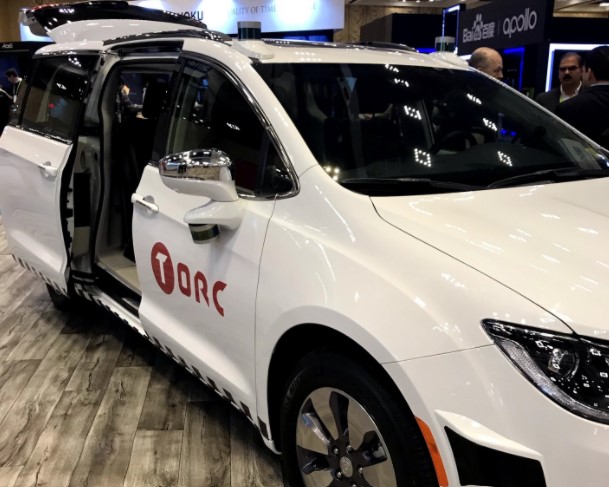The Long-Awaited Promise of Self Driving Vehicles
September 29, 2021
Chances are you’ve heard of the upcoming invention of self-driving cars. As a seemingly new and novel idea, self-driving cars fascinate the public and many wait eagerly for the rollout of this innovation. Perhaps, the legal driving age could even be lowered for self driving cars.
Still, let’s not get too ahead of ourselves. This novel idea is in fact pretty ancient. The concept of a self-driving vehicle is at least as old as 1925, when Houdina Radio Control’s remote control car roamed around New York City. Ever since then, in a world of rapid technological innovation, self-driving cars have been continually evolving. Nowadays, they are a big focus of many major tech companies. In the 2010s, self driving vehicle development had been taken up by a variety of major companies from Google to Mercedes. However, it seems that the key question still lingers: when exactly will self-driving cars leave the small streets of trial and enter the highway that is the commercial car industry?
The self-driving car’s main selling point is its potential to save lives through the elimination of human error on the road. According to the U.S. General Services Administration, there are 6,420,000 automotive accidents annually in the United States. 98% of these accidents are due to human error. These figures say a lot about the current state of vehicular safety in the U.S. Yet, can self-driving cars really help prevent these accidents or will they create a slew of accidents of their own?
Accidents caused by self-driving cars feed the cloud of fear that surrounds the implementation of the technology. In 2015, Google reported that its self-driving test vehicles had been in a few minor accidents. More troubling, in 2016 a Tesla in autopilot mode caused a fatal accident. In 2018, yet another fatal death occurred, this time involving a self-driving vehicle and a pedestrian. Just recently, in August 2021, another vehicular crash involving a Tesla car in Autopilot made headlines. Still, it is possible that these rare occurrences don’t tell the full story. A 2015 study by the University of Michigan Transportation Research Institute found that although self-driving cars wound up in more accidents per million miles driven (as compared to traditional vehicles), the incidents involving automated vehicles were often less severe and usually the self-driving vehicle was not even the one at fault.
Regardless of risks, advanced technology is being used to ensure that self-driving cars are fully equipped to handle dangerous situations. Platforms such as the Moral Machine, an ethical survey from MIT, are used to collect valuable data about how artificial intelligence should respond to certain pressing dilemmas on the road. These digital surveys show users two hypothetical scenarios, typically the choice of saving the pedestrian or the driver, and pose a choice between which scenario would be ethically superior. By incorporating a variety of variables, the Moral Machine reveals a glimpse of the complexity behind self-driving vehicle technology.
As said by Bernard Lu, an attorney from the California Department of Motor Vehicles, self-driving car technology “is ahead of the law in many areas.” Meaning, not only is the technology difficult to develop, it is difficult to implement. Because many state laws surrounding the operation of vehicles were founded on the basis that the driver would be human, robot chauffeurs are difficult to accommodate. Despite Google and other companies consistently making headlines about upcoming self-driving vehicles, it feels as if the technology is taking forever to finally go public. The strict laws surrounding vehicles are partially behind the slow rollout of this new technology.
Still, in recent times, self-driving technology has inched closer to the consumer market. A few years ago, Waymo, Google’s self-driving car project, started offering self-driving taxi services to consumers in Phoenix, Arizona. They have recently expanded the service to “testers” in San Francisco. Yet, like all self-driving endeavors, riders are sworn to confidentiality and the program is still in a trial phase. Like Google, in September 2021, Apple appointed a new executive head to their self-driving electric car project. However, obstacles, such as New York City’s new permit requirements for self-driving cars, also continue to pop up. As governments work on legislative approval and companies make advancements in the technology’s safety, the industry hopes that self-driving technology will slowly but steadily become a reality.
Self driving car technology is continually evolving as the public watches in awe. As someone whose family owns a Tesla, a vehicle with Autopilot capabilities, Radnor High School student Debby Armstrong is one of many who ponders the safety of self-driving vehicles. In regards to Autopilot, she believes that “it has to do with the driver. If they are alert and can easily take back the controls and have quick reflexes and aren’t abusing the technology, passengers should feel safe. But when drivers abuse the technology and sleep or become distracted while in Autopilot, that’s when passengers should worry for their safety.” Still, Debby is hopeful that “in our future we can get to a point where Autopilot is more reliable, but I think an extremely significant amount of work needs to be done if cars become completely self driving.” Perhaps one day Radnor High School students will drive up to campus in their own automated vehicles.







